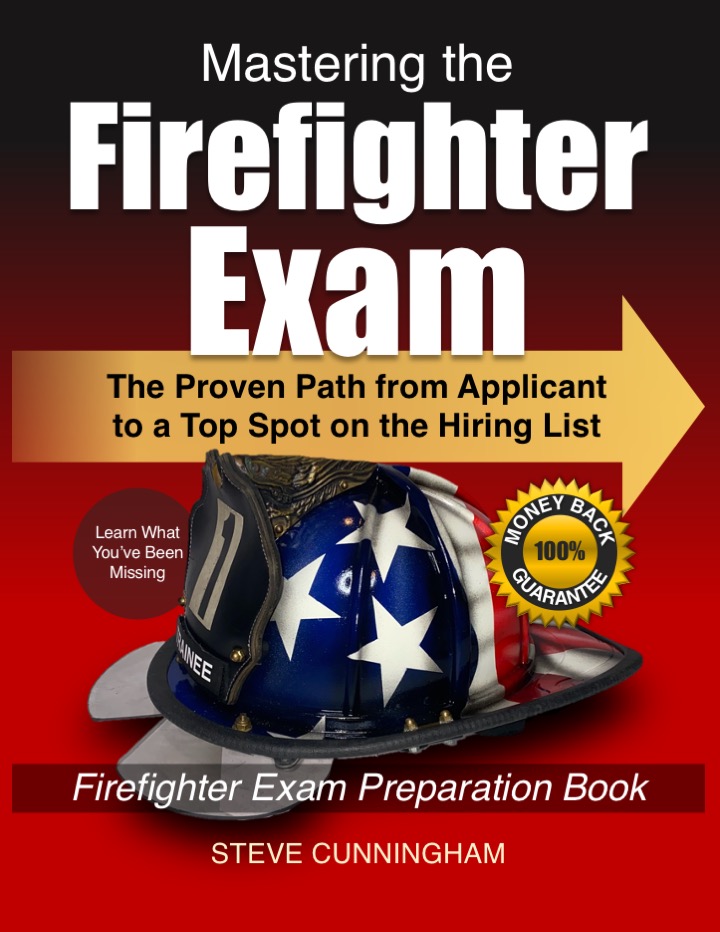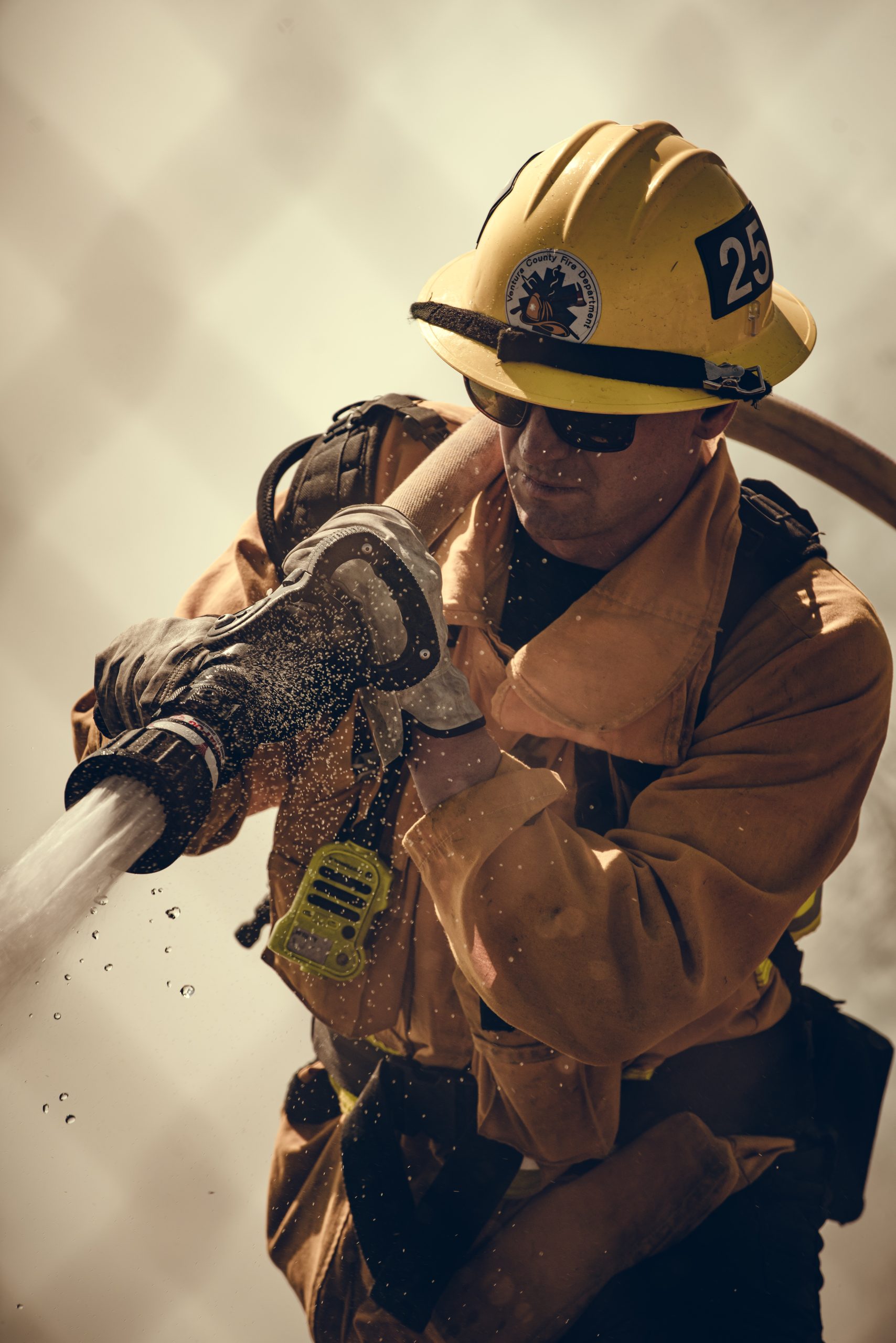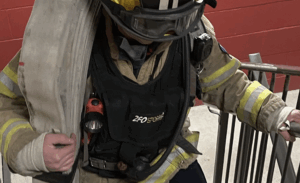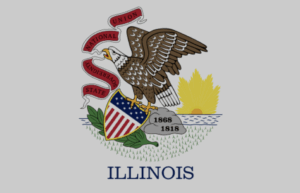Wildland firefighters are the unsung heroes who courageously battle some of nature’s fiercest foes: wildfires. Their role extends far beyond dousing flames; they are guardians of our forests, safeguarding communities, wildlife, and natural landscapes from the devastating impact of uncontrolled blazes.
These dedicated individuals are the frontline defense against nature’s fury. They brave rugged terrain, scorching heat, and unpredictable conditions to contain, suppress, and ultimately extinguish wildfires. But their mission doesn’t stop there; they strive tirelessly to prevent the spread of these fires, employing a blend of strategic planning, physical endurance, and unwavering determination.
The significance of wildland firefighters cannot be overstated. Beyond the immediate containment efforts, their work contributes to preserving ecosystems, protecting homes and livelihoods, and ensuring the safety of communities across vast expanses of wilderness.
This comprehensive guide will delve into wildland firefighting, exploring the path to becoming one of these remarkable individuals.
Table of Contents
What Does a Wildland Firefighter Do?
Wildland firefighters are dedicated professionals entrusted with combating wildfires in various natural landscapes, including forests, grasslands, and wilderness areas. Their primary objective revolves around containing, suppressing, and extinguishing wildfires, employing specialized techniques, equipment, and strategic planning to accomplish this mission.
Unlike structural firefighters who focus on urban or residential fires, wildland firefighters primarily operate in remote and often challenging environments. Their duties extend beyond putting out flames; they conduct controlled burns, create firebreaks, and engage in mitigation efforts to prevent fires from spreading further.
Roles and Responsibilities
The roles and responsibilities of wildland firefighters encompass a diverse array of tasks that demand physical stamina, technical skills, and a profound commitment to safety. These include:
- Fire Suppression: Engaging directly with wildfires, employing various tools like hoses, pumps, and hand tools to contain and extinguish flames.
- Preventive Measures: Conducting controlled burns, clearing vegetation, and creating fire lines to mitigate the spread of fires.
- Emergency Response: Rapidly responding to fire outbreaks, assessing the situation, and strategizing effective containment methods.
- Teamwork and Collaboration: Working in cohesive teams to ensure efficient operations and maintain safety standards in hazardous conditions.
Challenges and Rewards of the Profession
The profession of wildland firefighting is both demanding and rewarding, presenting unique challenges and gratifying experiences:
- Physical Demands: The job demands peak physical fitness due to the rigorous outdoor work, requiring endurance, strength, and agility.
- Adverse Conditions: Wildland firefighters operate in extreme weather conditions, including heat, smoke, and rugged terrains, adding complexity and danger to their tasks.
- Emotional Resilience: Witnessing the destruction caused by wildfires can be emotionally taxing, requiring mental fortitude and resilience.
However, the rewards of this profession are profound. Wildland firefighters experience a sense of fulfillment in protecting communities, ecosystems, and natural resources. They form strong bonds within their teams, derive satisfaction from overcoming challenges, and contribute significantly to preserving our environment.
Wildland Firefighter Requirements and Essential Skills
Education Needed
While a high school diploma or equivalent is typically the minimum requirement to start a career in wildland firefighting, certain specialized positions or agencies may prefer candidates with additional education or degrees in fields such as forestry, environmental science, or fire science. Pursuing relevant courses or degrees can provide a deeper understanding of fire behavior, ecology, and management techniques, augmenting one’s qualifications.
Essential Skills
Becoming a successful wildland firefighter requires a diverse set of skills beyond formal education:
- Physical Fitness: Peak physical condition is essential due to the demanding nature of the job. Endurance, strength, and agility are vital to navigating rugged terrains, carrying heavy equipment, and working effectively under strenuous conditions.
- Teamwork and Communication: Strong teamwork skills are indispensable. Wildland firefighters often operate in teams, requiring effective communication, cooperation, and working harmoniously under pressure.
- Problem-Solving and Decision-Making: Critical thinking and decision-making in high-stress situations are critical skills. Wildland firefighters must assess rapidly changing conditions and adapt their strategies accordingly.
- Technical Proficiency: Familiarity with firefighting equipment, navigation tools, and specialized fire containment and suppression techniques is essential. Training in using tools like hoses, pumps, and hand tools is often part of the skillset.
Certifications and Training Programs
Acquiring certifications and undergoing specialized training significantly enhances one’s prospects in wildland firefighting. Various agencies, such as the National Wildfire Coordinating Group (NWCG) and state-level firefighting academies, offer courses and certifications like the Basic Firefighter, Wildland Firefighter Type 1 (FFT1), Incident Commander, and others. These certifications validate an individual’s competence in handling different aspects of wildland firefighting and are often prerequisites for employment in the field.
Getting Prepared to Become a Wildland Firefighter
1. Physical Fitness and Conditioning
Physical fitness stands as a cornerstone of a successful career in wildland firefighting. The demanding nature of the job requires individuals to maintain peak physical condition. Regular exercise routines focusing on strength, endurance, and agility can significantly enhance readiness for the challenges ahead.
- Cardiovascular Endurance: Activities like running, hiking, and cycling improve cardiovascular endurance, which is crucial for enduring prolonged physical exertion during firefighting operations.
- Strength Training: Building strength through weightlifting, bodyweight exercises, and functional training aids in carrying heavy equipment, navigating rugged terrain, and executing physically demanding tasks.
- Flexibility and Mobility: Yoga, stretching routines, and mobility exercises enhance flexibility, reducing the risk of injuries during strenuous activities.
2. Volunteer Firefighting or Related Experiences
Volunteering with local fire departments or engaging in related experiences can offer invaluable insights and practical skills relevant to wildland firefighting. These experiences provide exposure to firefighting scenarios and demonstrate a genuine commitment to the field.
- Hands-On Experience: Volunteering allows individuals to gain firsthand experience in firefighting techniques, equipment usage, and teamwork within controlled environments.
- Networking and Mentorship: Engaging with seasoned firefighters through volunteer opportunities can establish crucial connections and mentorship, providing guidance and advice for aspiring wildland firefighters.
- Demonstrated Commitment: Including volunteer firefighting experiences on a resume exhibits dedication and passion for the field, increasing the candidate’s appeal to potential employers.
3. Building a Strong Resume or Portfolio
A compelling resume or portfolio tailored to wildland firefighting can significantly enhance one’s chances of securing employment.
- Highlight Relevant Skills: Emphasize physical fitness, teamwork, problem-solving, and any firefighting-related experiences or certifications.
- Detail Volunteer Experiences: Describe roles, responsibilities, and skills gained through volunteer firefighting or related experiences, showcasing practical knowledge and dedication.
- Education and Certifications: List any relevant education, degrees, or certifications obtained, particularly those in firefighting or emergency response.
Need help with your resume? Read Building a Strong Firefighter Resume and see example resumes and more.
Where to Apply for Wildland Firefighter Positions
1. Federal Agencies:
United States Forest Service (USFS): Visit the USFS website for job openings and opportunities related to wildland firefighting. They offer various positions, including hotshot crews, engine crews, and other specialized teams.
Bureau of Land Management (BLM): The BLM website also hires wildland firefighters and regularly posts job openings. Positions range from entry-level to advanced roles within firefighting teams.
2. State Agencies:
State Departments of Natural Resources (DNR): State-level DNRs often recruit wildland firefighters for seasonal positions. Check individual state DNR websites for job postings and application instructions.
State Fire Marshal Offices: Some states also have fire marshal offices that hire and coordinate wildland firefighting efforts. These offices may have seasonal or full-time positions available.
3. Local Fire Departments and Conservation Corps:
Local Fire Departments: Some municipal or rural fire districts hire wildland firefighters, especially in areas prone to wildfires. Check their websites or contact them directly for potential opportunities.
For more about becoming a city career firefighter read: Firefighter Hiring Requirements and Preferences Explained
Conservation Corps: Organizations like AmeriCorps or specific state-based conservation corps often offer programs and positions related to wildland firefighting. These programs provide training and hands-on experience in firefighting and conservation efforts.
4. Online Job Portals and Government Websites:
USAJOBS.gov: The official job site for federal government positions often lists openings for wildland firefighting roles within various federal agencies.
State Government Websites: State government job portals frequently advertise positions in agencies responsible for managing forests, parks, and natural resources, which may include wildland firefighting opportunities.
5. Wildfire Contracting Companies:
Private Contractors: Some private companies specialize in wildfire management and contract with government agencies during wildfire seasons. Exploring these companies’ websites or contacting them directly might lead to job opportunities.
Examples of wildfire contracting companies:
- Grayback Forestry Inc.: Offers wildfire services including fire suppression, prescribed burning, and forest management.
- Blackhawk Wildland Services: Specializes in wildfire response, prescribed burning, and forest health services.
- Firestorm Wildland Fire Suppression Inc.: Provides wildfire suppression, prevention, and emergency services across different regions.
- Timberline Forest Service: Offers firefighting services, prescribed burns, and land management for wildfire prevention.
- WFX Fire Services: Specializes in fire suppression, emergency response, and forest management services.
- North Tree Enterprises: Provides wildfire contracting services, including fireline construction, prescribed burning, and land restoration.
- Wildfire Defense Systems: Offers wildfire response and mitigation services, including aerial firefighting support and consulting.
- ALERTWildfire: Focuses on providing technology and solutions for early wildfire detection and monitoring.
These companies often contract with government agencies and private entities during wildfire seasons to assist in firefighting efforts, providing specialized equipment, personnel, and expertise in wildfire management and suppression.
These avenues are often primary sources for finding and applying to wildland firefighting positions. Regularly checking their websites and job listings can increase your chances of finding suitable openings. Additionally, networking with professionals in the field and staying informed about seasonal hiring cycles can be beneficial in securing a position as a wildland firefighter.
Applying for Wildland Firefighter Positions
1. Job Search Strategies
- Online Resources: Explore job postings on dedicated websites such as government job portals, wildfire agencies’ websites, and firefighting forums.
- Networking: Connect with professionals in the field, attend career fairs, and join professional firefighting associations to stay informed about job openings and opportunities.
- Local Fire Departments: Some local fire departments or state agencies offer seasonal positions or internships; regularly check their websites or contact them directly for potential openings.
2. Application Process and Requirements
- Review Requirements: Carefully read job postings to understand specific requirements such as certifications, experience, education, and necessary documents (like driver’s license, medical exams, etc.).
- Prepare Documentation: Ensure all required documents, certifications, and qualifications are up-to-date and readily available for submission.
- Tailor Your Application: Customize your resume and cover letter to highlight relevant skills, experiences, and certifications related explicitly to wildland firefighting.
3. Interview Tips and Tricks
- Research the Agency: Learn about the agency or organization you’re applying to, understanding their mission, values, and recent projects or initiatives.
- Highlight Your Experience: During the interview, showcase your relevant experiences, skills and how they align with the position’s requirements.
- Demonstrate Adaptability: Wildland firefighting requires adaptability and quick decision-making; emphasize instances where you’ve demonstrated these qualities in challenging situations.
- Ask Questions: Prepare thoughtful questions about the role, the team, or the agency to demonstrate your interest and engagement in the position.
4. Additional Tips
- Stay Persistent: The process of landing a position as a wildland firefighter can be competitive. Stay persistent and continue applying to multiple opportunities.
- Seek Feedback: If initially unsuccessful in securing a position, seek feedback to improve your application or interview skills for future opportunities.
Career Growth and Advancement in Wildland Firefighting
1. Opportunities for Advancement
- Promotions: Experienced wildland firefighters can advance to supervisory roles such as Crew Boss, Squad Boss, or Helitack Manager, responsible for overseeing and leading firefighting teams.
- Specialized Teams: Joining specialized units like Hotshot Crews, Smokejumpers, or Helitack Crews presents opportunities for increased responsibility and technical skill development.
2. Additional Training and Certifications
- Advanced Firefighter Certifications: Certifications like Incident Commander, Helicopter Manager, or Fire Behavior Analyst require additional training and are essential for advancing to higher positions.
- Leadership Training: Courses in leadership, incident management, and strategic planning prepare individuals for managerial roles within firefighting agencies.
3. Career Paths Within Wildland Firefighting
- Fire Management Officer: Overseeing fire prevention, prescribed burns, and firefighting strategies in a specific region or district.
- Fire Ecologist: Studying fire’s ecological role, its impact on ecosystems, and implementing fire management plans in alignment with environmental goals.
- Fire Investigator: Analyzing the causes of wildfires, gathering evidence, and aiding in prevention strategies to mitigate future incidents.
Example Career Path:
- Entry-Level Firefighter: Begins as a seasonal firefighter, gaining experience in fire suppression and containment techniques.
- Intermediate Level: Progresses to Crew Boss or Engine Boss, leading a team of firefighters during operations.
- Advanced Level: Moves into managerial roles like Incident Commander or Fire Management Officer, overseeing large-scale firefighting efforts.
Additional Training and Certifications:
- National Wildfire Coordinating Group (NWCG) Certifications: Includes Basic Firefighter, Incident Commander, Fire Operations Specialist, and more.
- Emergency Medical Technician (EMT) Certification: Beneficial for providing medical support during firefighting operations.
- Wilderness First Responder (WFR) Certification: Focuses on providing medical care in remote settings, crucial in wildland firefighting scenarios.
Conclusion
Becoming a wildland firefighter is more than a career choice; it’s a dedication to protecting our natural landscapes and communities from the ravages of wildfires. Throughout this comprehensive guide, we’ve explored the multifaceted journey of stepping into this noble profession.
Understanding the Role:
Wildland firefighters stand as the frontline guardians against nature’s fiercest adversary, battling wildfires and employing strategic measures to contain and extinguish these blazes while safeguarding our environment.
Preparation and Requirements:
From the essential skills and physical conditioning necessary to the educational qualifications and certifications vital for entry, the path to becoming a wildland firefighter demands a blend of dedication, physical prowess, and specialized knowledge.
Applying:
Navigating the application process involves strategic job search strategies, understanding where to find openings, and presenting a strong application showcasing relevant skills and experiences.
Need help with your resume? Read Building a Strong Firefighter Resume and see example resumes and more.
The Call to Service:
The career of a wildland firefighter beckons to those willing to embrace challenges, make a difference, and commit to a profession that transcends mere employment. It’s a path filled with camaraderie, the thrill of overcoming obstacles, and the gratification of preserving our natural heritage.
In closing, as you embark on your journey to become a wildland firefighter, remember the resilience, determination, and unwavering dedication required for this honorable pursuit. Let this guide serve as a roadmap, equipping you with the knowledge and insights needed to tread this remarkable path.
Learn How You Can Become A Firefighter

Mastering the Firefighter Exam is a complete guide on how to pass the firefighter exam with a top score. It simplifies the complicated hiring practices of big city fire departments and reveals insider information most candidates don’t know about.
If You Would Like To Know How To Get A Head Of Your Competition, This Book Is For You.







